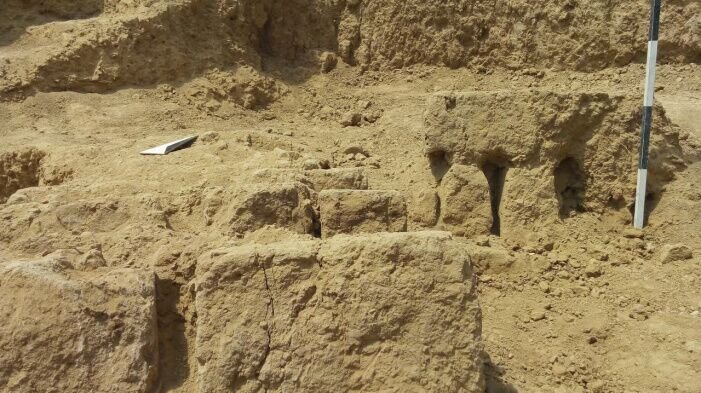INSUBCONTINENT EXCLUSIVE:
era.The relatively well-preserved find was recently uncovered in Viranshahr, which is situated near the city of Faruj in North Khorasan
province.The monument stands on 3-meter-thick clay walls, IRNA reported on Saturday.What distinguishes this monument from similar examples
were coated with a layer of plaster.The discovery was made during the fifth archaeological season that commenced earlier this year.Co-led by
with the Louvre museum, the recent excavations were aimed to sharpen the focus on hidden gems of cultural heritage at the ancient site which
discovered potteries and other cultural materials, as well their architectural style, indicate that Viranshahr was probably established in
wall, and in its northern corner there was another enclosed part, which was probably the seat of the rulers of this settlement as a
previous years led to the precise identification of the structure of a gate, however, this year's excavation was dedicated to the
recognition of a building buried in a hill that once stood with 3-meter-wide clay walls in the southern part of this area.Last year, the
archaeologists unearthed the ruins of a fortified structure during the fourth archaeological season
Based on initial evidence, experts from the Louvre and the University of Tehran, the structure had a religious or administrative use in its
heyday.The Parthian Empire, also known as the Arsacid Empire, was a major Iranian political and cultural power in ancient Iran from 247 BC
They largely adopted the art, architecture, religious beliefs, and royal insignia of their culturally heterogeneous empire, which
encompassed Persian, Hellenistic, and regional cultures
At its height, the Parthian Empire stretched from the northern reaches of the Euphrates, in what is now central-eastern Turkey, to eastern
Iran.The Sassanid era is of very high importance in the history of Iran
Under Sassanids, Persian art and architecture experienced a general renaissance
Architecture often took grandiose proportions, such as palaces at Ctesiphon, Firuzabad, and Sarvestan, which are amongst the highlights of
northeastern Iran, southern Turkmenistan, and northern Afghanistan
The historical region extended along the north, from the Amu Darya (Oxus River) westward to the Caspian Sea and, along the south, from the
fringes of the central Iranian deserts eastward to the mountains of central Afghanistan.AFM

